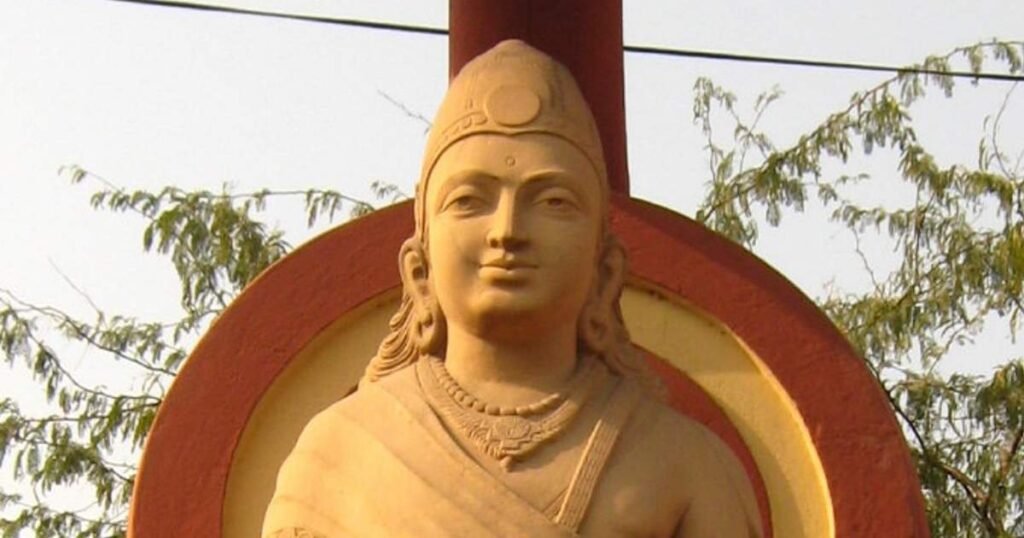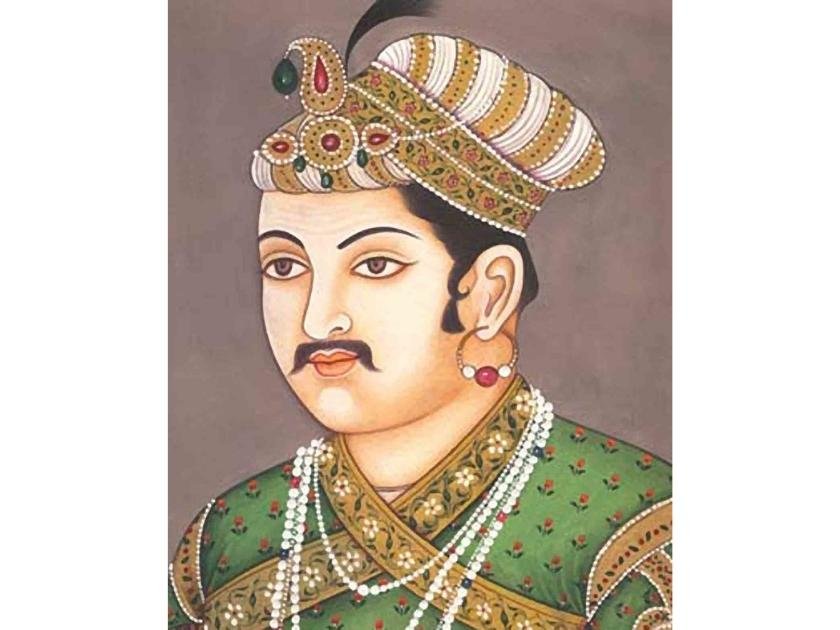Throughout history, height has often been linked to power, dominance, and battlefield presence. Many Indian emperors were not only great rulers but also physically towering figures who commanded respect with their sheer presence. Their height played a role in their leadership, military strategies, and historical legacy.
Explore the eight tallest emperors of India, known for their impressive stature and remarkable achievements. From legendary Rajput warriors to powerful Mughal rulers, these kings left a lasting impact on history. Among them, one name stands out as the Tallest King of India, a ruler whose height became a part of his legend.
Who Was India’s Biggest King?
India has witnessed many great rulers, but defining the biggest king depends on different factors like empire size, influence, or physical stature. In terms of territorial expansion, Chandragupta Maurya was one of the greatest, founding the vast Maurya Empire, which covered most of the Indian subcontinent. Similarly, Akbar the Great is often regarded as the most influential Mughal emperor, known for his military conquests and progressive policies.
If we talk about physical stature, Maharana Pratap is often considered the Tallest King Of India. Historical accounts suggest he stood over 7 feet tall, making him a towering figure both in height and bravery. His unmatched strength and valor in battles against the Mughals made him one of India’s most legendary kings.
See More: Dimensions of a Pringles Can?
1. Maharana Pratap (1540–1597) – Approx. 7 feet 5 inches

Maharana Pratap, the legendary Rajput king of Mewar, is widely believed to be the tallest king of India. Historical records and local folklore suggest he stood around 7 feet 5 inches, making him a physically imposing warrior on the battlefield. His exceptional height and muscular build gave him an advantage in combat, allowing him to wield heavy weapons that ordinary soldiers could not. His armor alone weighed around 200 kg, and he carried a spear weighing 80 kg, proving his immense strength.
Pratap’s towering presence, combined with his bravery, made him one of the greatest warriors in Indian history. He fought several battles against the Mughal emperor Akbar, most notably the Battle of Haldighati (1576), where he displayed unmatched courage. Despite facing a powerful Mughal army, Pratap’s height and combat skills helped him survive and continue resisting foreign rule. His warhorse, Chetak, was also famous for carrying him swiftly through battles, adding to his legend.
Se More: How Long Is 15 Centimeters? 10 Common Things
2. Prithviraj Chauhan (1166–1192) – Over 6 feet

Prithviraj Chauhan, the last Rajput king of Delhi, was another tall and powerful ruler, standing over 6 feet tall. He was known for his sharp archery skills, strong physique, and exceptional horse-riding abilities. His height made him a dominant figure in battle, allowing him to command his army with great confidence. He often fought on horseback, using long swords and heavy armor, making him a feared warrior in medieval India.
One of his most famous battles was against Muhammad Ghori, where his bravery and strength were tested. Even after being captured in battle, his legendary skill of “Shabd Bhedi Baan” (shooting arrows based on sound) helped him defeat Ghori in captivity. His tall and imposing figure, along with his military expertise, made him one of the most respected kings in Indian history.
3. Chandragupta Maurya (340–297 BCE) – Around 6 feet 6 inches

Chandragupta Maurya, the founder of the Maurya Empire, is believed to have been around 6 feet 6 inches tall. Greek historians like Megasthenes, who visited his court, described him as a tall, well-built, and fearless leader. His height, combined with his strategic mind, allowed him to defeat the powerful Nanda dynasty and lay the foundation of one of the largest empires in Indian history.
Given his physical prowess and fighting training, his commanding attitude was crucial in military conflicts. His empire stretched from modern-day Afghanistan to most of the Indian subcontinent, proving his dominance. With the guidance of Chanakya, Chandragupta transformed from a warrior into a statesman, ruling over millions with wisdom and strength.
4. Emperor Akbar (1542–1605) – Over 6 feet

Akbar, the greatest Mughal emperor, was known for his commanding presence and strong physique, standing over 6 feet tall. Unlike many other rulers, he trained himself in wrestling, sword fighting, and archery, making him one of the most battle-ready kings of his time. His height gave him an intimidating presence on the battlefield, where he led his army personally in several conquests.
Beyond physical stature, Akbar’s political intelligence made him even more powerful. He expanded the Mughal Empire across North and Central India, establishing a vast and multicultural kingdom. His towering figure, both in terms of height and leadership, made him one of the most influential emperors in Indian history.
5. Sher Shah Suri (1486–1545) – Over 6 feet

Sher Shah Suri, the founder of the Suri Empire, was known for his tall and robust physique, standing over 6 feet tall. He was an exceptional warrior and strategist who rose from a small noble family to defeat the mighty Mughal Emperor Humayun. His strength and physical stature allowed him to lead battles personally, inspiring his soldiers with his presence.
Apart from his physical might, Sher Shah Suri introduced some of India’s greatest administrative reforms, including the famous Grand Trunk Road (GT Road). His rule was short-lived, but his influence remained strong, as his reforms were later adopted by the Mughals. His tall and authoritative figure played a key role in his ability to establish a strong, disciplined empire.
6. Tipu Sultan (1751–1799) – Over 6 feet

Tipu Sultan, the ruler of Mysore, was over 6 feet tall and had a powerful build. He was famous for his resistance against the British and his advanced military technology. His height gave him an advantage in close combat, making him a feared warrior on the battlefield. He was known for using rockets in warfare, which were later adapted by the British army.
Despite being tall and strong, Tipu was also known for his intelligence and diplomatic strategies. His fight against the British East India Company made him one of the most respected Indian rulers. His imposing stature and military genius earned him the title “Tiger of Mysore,” symbolizing his fearless personality.
7. Raja Raja Chola I (947–1014 CE) – Over 6 feet

Raja Raja Chola I, one of South India’s greatest emperors, stood over 6 feet tall and was known for his extraordinary leadership skills. His tall and powerful figure made him a respected warrior, feared by his enemies. He expanded the Chola Empire beyond India, conquering parts of Sri Lanka and Southeast Asia, making the Cholas a dominant naval power.
His height and strength were reflected in his ability to lead massive armies and oversee large-scale temple constructions, including the famous Brihadeeswarar Temple. His physical stature and visionary leadership made him one of the most influential South Indian rulers of all time.
8. Rana Kumbha of Mewar (1433–1468) – Over 6 feet 5 inches

Rana Kumbha, one of the most powerful Rajput rulers, was over 6 feet 5 inches tall, making him one of the tallest kings in Indian history. His strong physique and commanding presence helped him build 32 massive forts, including the famous Kumbhalgarh Fort, which has the second-longest wall in the world after the Great Wall of China.
Apart from his height, Rana Kumbha was also a skilled warrior, defeating several invaders and expanding his kingdom. His tall and majestic appearance, along with his military strength, made him one of the greatest Rajput rulers in Indian history.
Conclusion
India’s history is filled with great emperors, but some stood out not just for their leadership, but also for their impressive height. From Maharana Pratap, believed to be the tallest king of India, to other mighty rulers like Prithviraj Chauhan, Chandragupta Maurya, and Rana Kumbha, their towering presence symbolized power and dominance on the battlefield. Their height, combined with their bravery, intelligence, and military strategies, made them unforgettable figures in Indian history.
While height alone did not define their greatness, it played a role in shaping their legendary status. These rulers not only commanded armies with their physical strength but also left behind legacies that continue to inspire generations. Their names are etched in history as tall warriors and powerful kings who shaped the destiny of India.



